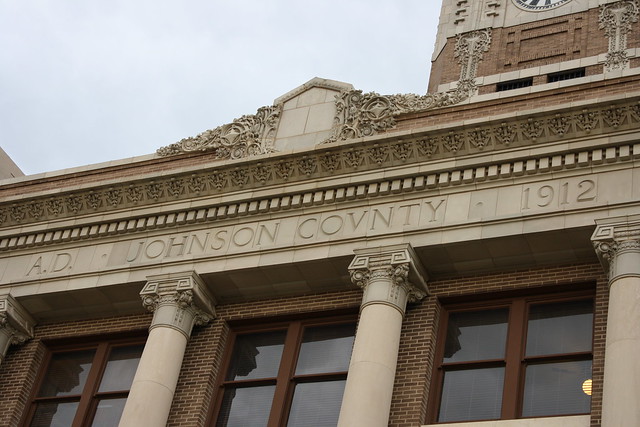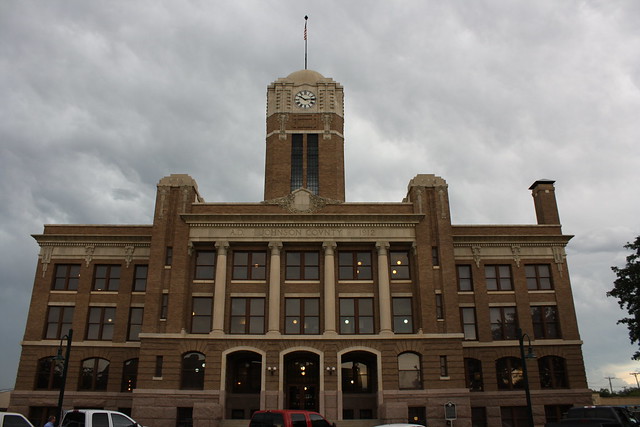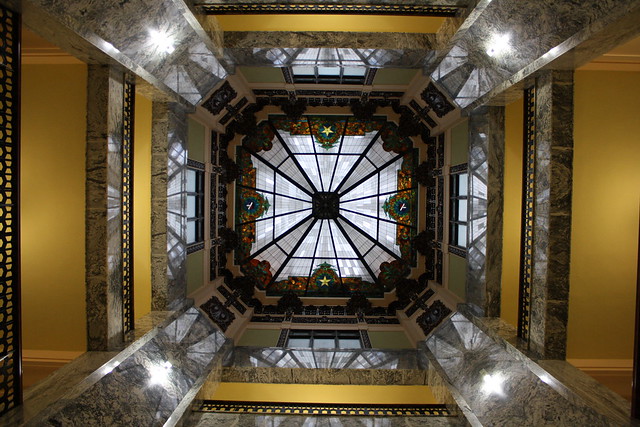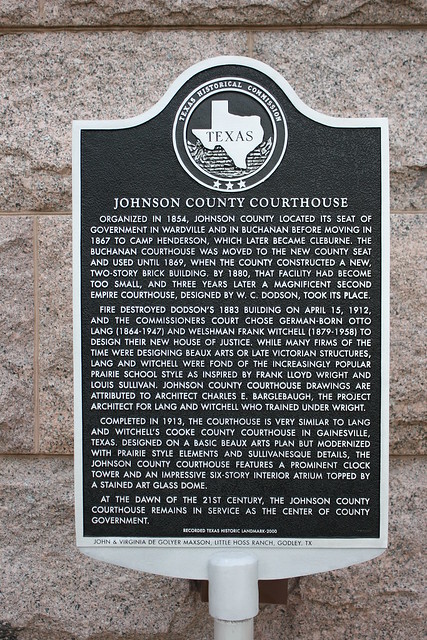The architectural firm for whom Charles Barglebaugh designed the 1910 Courthouse was the Dallas firm Lang and Witchell.
The Texas State Historical Association's online encyclopedia The Handbook of Texas at http://www.tshaonline.org/handbook offers a few articles of interest. Searches for the terms "Lang" and "Witchell" brought these articles:
"Bossom, Alfred Charles" by Mary Carolyn Hollers George summarizes the life of the English architect and Member of Parliament who spent considerable time in the US. The article includes a reference to his firm's association with the Lang and Withcell firm on Bossom's work on Dallas' 1918 American Exchange and National Bank. Bossom's contribution to the Houston skyline is the Petroleum Building of 1925-26. Returning to England Bossom was president of the Anglo-Texan Society for about 30 years.
Read more at:
"Architecture" is a lengthy article by Willard B. Robinson wherein this paragraph appears in a comparative gesture:
"While regional or early modern designs appeared in many residential edifices after the turn of the century, civic buildings generally were either Beaux-Arts Classical, a massive, heavy, monumental style, or Neo-Classical Revival, a graceful, dignified mode. The Harris County Courthouse, Houston (1911), a massive work, crowned with a dome designed by the firm of Lang and Witchell, exemplifies the former, while the Museum of Fine Arts, Houston (1924), a handsome work with an Ionic colonnade designed by William Ward Watkin, represents the latter."
Read more at:
"Lang, Otto" is a biographical summary by Heater Watkins.
"LANG, OTTO H. (1864–1947). Otto H. Lang, architect, was born in Freiburg, Germany, on December 2, 1864. In 1888 he traveled to the United States on a wedding trip and stayed to make his home in Dallas, Texas. He worked in local architects' offices for two years and then became responsible for architecture and design for the Texas and Pacific Railway. In this position Lang designed the Texas and Pacific depot in Fort Worth. He also eventually designed railroad stations in Wichita Falls, Amarillo, Paris, and Weatherford. He formed a partnership with Frank O. Wichell in 1905 and began practicing in Dallas. Lang worked on many architectural projects in that city, including the Southwestern Life Building, the White Plaza Hotel, Exposition Hall at Fair Park, Fair Park Auditorium, and the Sanger Brothers Department Store. He also worked on the Dallas Gas Company Building, the Wholesale Merchants Building, the Southland Life Building, the Cotton Exchange Building, the Jefferson Hotel, Highland Park High School, the Texas Bank Building, and the Adolphus Hotel Annex. He designed courthouses in Houston, Gainesville, Snyder, and Cleburne. Other projects included improvements of the Dallas street-lighting system, local street repair, and work on the garbage disposal facilities. From 1915 to 1919 he served two terms as Dallas street commissioner.
At his retirement in 1942, Lang gave his library on architecture and engineering to the Agricultural and Mechanical College of Texas (now Texas A&M University) and his file of technical journals to Southern Methodist University. Lang was a member of the American Society of Construction Engineers and the Texas Association of Architects. He was a thirty-second-degree Scottish Rite Mason, a Knight Templar, and a member of the Hella Temple Shrine. For many years he was a member of the Dallas Chamber of Commerce. He had one son and two daughters. Lang died in Dallas on October 18, 1947, and was buried at Restland Memorial Park in Dallas."









